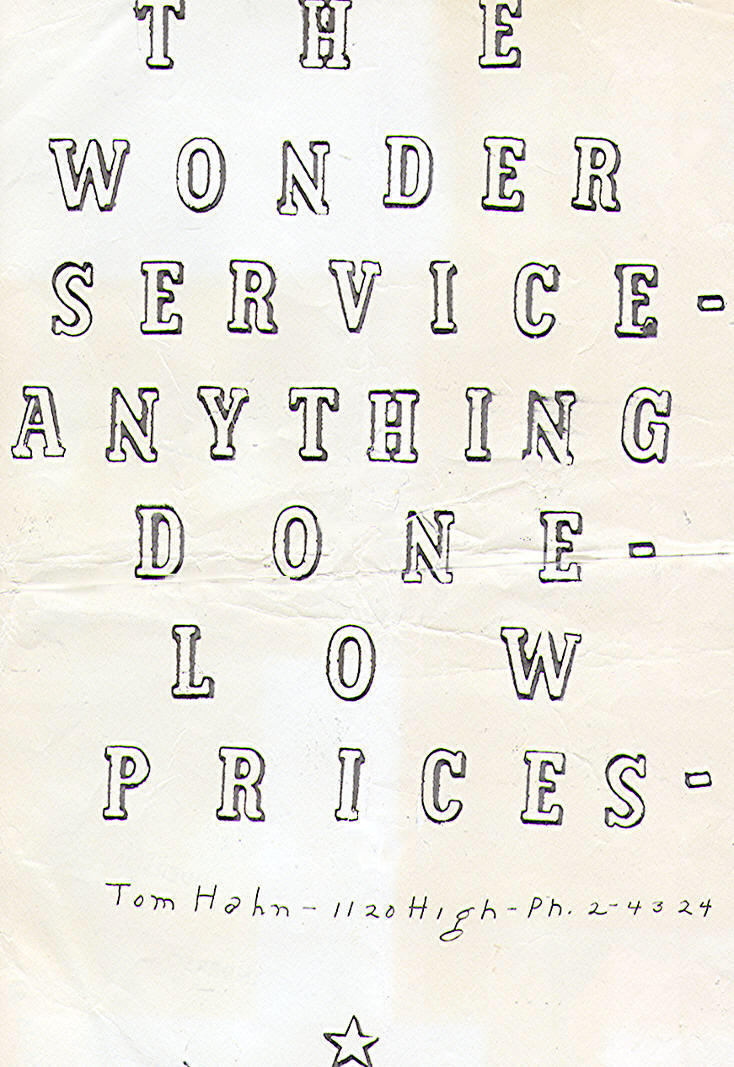
Home Page
13 September 2006
Tom Hahn Family - Part 3
OCCUPATIONS OTHER THAN MILITARY
1936 - 1944 -- Working at all kinds of jobs where I could find them, not an easy thing to do in the Great Depression. Some of them, according to a work journal I began in 1939, were: Shoveling snow; cutting grass, raking leaves, digging weeds, picking weeds, and other yard maintenance work; washing cars; inside household jobs; collecting and selling milk and pop bottles; collecting and selling old newspapers; selling Liberty magazines; washing windows; picking and selling cherries and plums and pears; picking crops, such as green beans; doing homework for classmates; school delivering hand bills; delivering, newspapers; matching pennies; offering to do anything for pay as the "owner" of "The Wonder Service"; removing wall paper, taking down awnings; putting up storm windows; cutting down trees; catching and selling fish; removing a mouse from a trap; squeezing oranges for a drive-in; digging potatoes; picking beans; casual work at Safeway; drug store clerk; maintenance work at a shoe store; operating machinery making airplane parts.

Prior to 1942 -- Various kid jobs (to be
elaborated on)
1942 - 1944 -- Postal Clerk,
United States Post Office at Topeka, Kansas, while attending High School
during World War II
1946 - 1948 Austin, Texas, while attending the University of Texas: Digging
ditches, assembling brochures, proof reader, assistant to an exterminator,
janitor, house painter, reader to the blind, yard maintenance.
1954 --
Laborer at a tree nursery in Falls Church, Virginia. Salesman for
American-German Chemicals, Incorporated, in preparation for position as Vice
President for the Western half of the United States. In training in Washington, District of Columbia as a Pyrometallurgical Engineer for Magnaslag, Incorporated, as a Test supervisor
for a project to extract manganese from steel slag. The project ended in
failure when the person in charge of operations allowed the furnace at Coxton,
Pennsylvania to freeze up.
1954-1956 -- Telecommunication Specialist, Signal Corps Intelligence
Agency/G2 (Intelligence) United States Army. Technical Writer. Wrote
Telecommunication Studies for the National Intelligence Survey and Signal
Technical Intelligence Studies. GS-9 and GS-11. Translator for Transworld
Language Service, Washington, District of Columbia in Bulgarian, German, and
Russian.
Signal Corps Intelligence Agency, Washington, DC, 1954 (Tom in back row, forth from right) ( Hahn Collection)
1972 -- On the Civil Service Register as a GS-15.
National Park Service

1972 -- Management Assistant, Assistant for Canals, George Washington
Parkway, National Park Service, Washington, District of Columbia, GS-11.
Chesapeake and Ohio Canal, Maryland and the Potomac Canal, Great Falls,
Virginia.
Description of Position Description as Management Assistant for Canals, George
Washington Memorial Parkway:
1. Introduction - This position is located in the office of the
Superintendent of the George Washington Memorial Parkway.
2. Duties - Incumbent will provide coordination between George Washington
Parkway, National Capital Parks headquarters, and [Denver] Service Center
representatives on rehabilitation of historic structures and repairs to the
Chesapeake and Ohio Canal and towpath necessitated by the 1972 flood. Estimates
of the flood damage of the canal in the section of the canal under the George
Washington Memorial Parkway exceed $5
million and repairs are expected to be continuing for at least one year. He will
represent the Superintendent in the extensive contacts with outside
organizations and individuals with repairs to the Chesapeake and Ohio
Canal through meetings, telephone calls, and correspondence. To the extent that
the above priorities permit, the incumbent will also develop interpretive
materials for signs, publications, and guided walks along the canal from
Georgetown to Seneca.
3. Supervision - Incumbent is supervised directly by the Superintendent.
He will also be guided by legislation, handbooks, and policies arising from the
work of the Chesapeake and Ohio Canal National Historical Park Commission and
the master plan study team.
4. Qualifications - Incumbent should be skilled in public relations and
with the techniques of management budgeting. He should also be well versed in
the history of the Chesapeake and Ohio Canal and knowledgeable about the
techniques of construction, operation, and maintenance of canals.
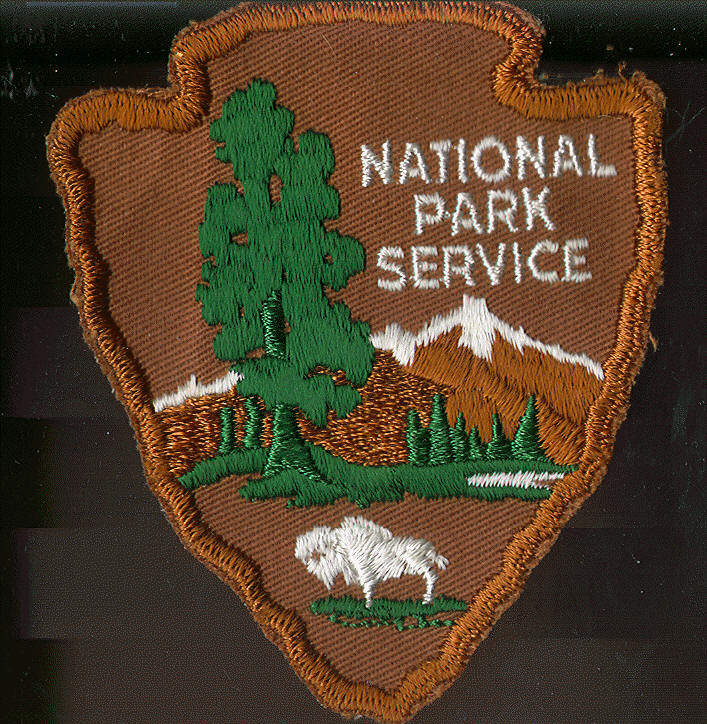
National Park Service Badge (Hahn Collection)
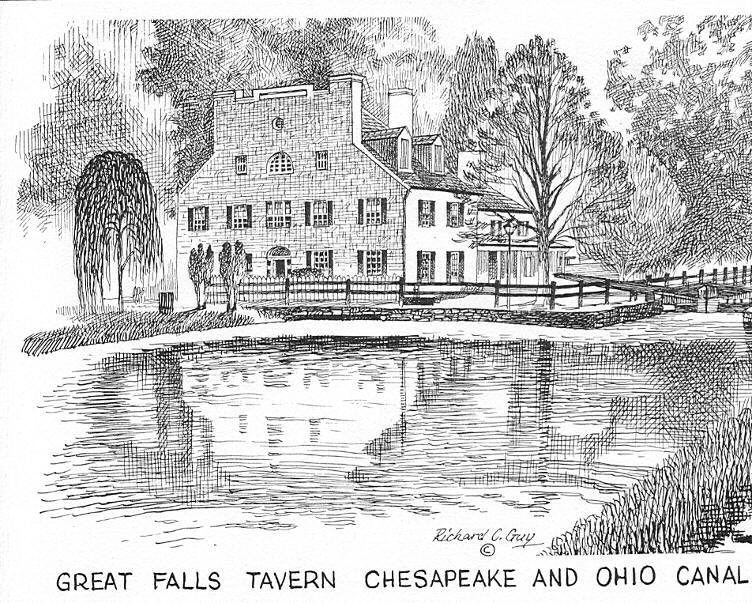
Tom Hahn's Office as Supervisory Ranger, Restored Chesapeake & Ohio Canal.
In 1830, the C&O Canal Company built one hotel along the 185-mile-length of the
canal, named the "Crommelin House." The hotel and tavern was located adjacent to
the scenic and exciting Great Falls on the Potomac River.
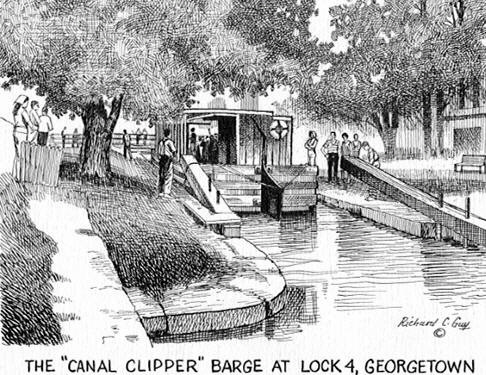
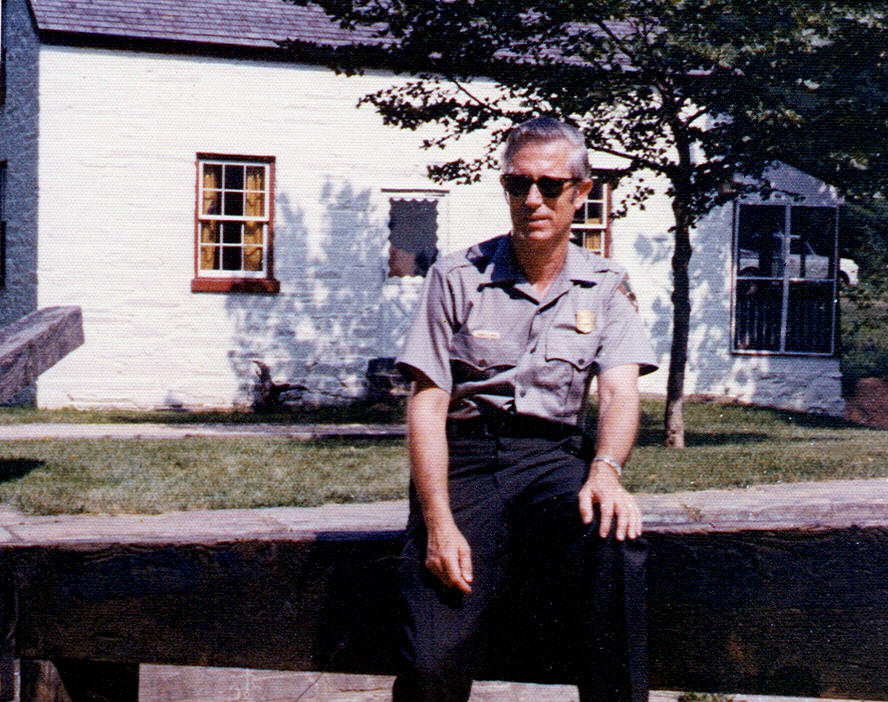
Supervisory Ranger Tom Hahn, Chesapeake & Ohio Canal (Restored Section), 1973.
Tom and Nathalie and son Duane (Torrey) lived here in Lock House 6 during 1972-1975 while Tom was first
Canal Assistant, George Washington Memorial Parkway at Turkey Run, Virginia --
across the river-- then as Supervisory Ranger of the Restored C&O Canal at the
Great Falls Tavern at Potomac, Maryland, and finally as a contract Industrial
Archaeologist for the Denver Service Center, National Park Service on the C&O
Canal Restoration Team. ( Hahn Collection)

Tom with two Interested parties Examining Navigation Remains on
the Rappahannock River. Sometimes I would go to navigations other than those
associated with the Potomac River to lend a hand in various investigations of
archaeological remains (Hahn Collection)

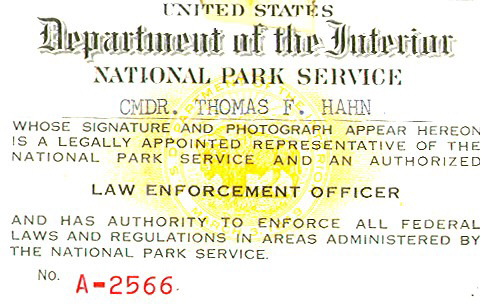
1972-1995 -- Contractor/Consultant in Industrial Archaeology for such canals as the Illinois & Michigan Canal (Illinois), Blackstone Canal (Massachusetts), Industrial Canals at Patterson, New Jersey; Potomac Canal (Great Falls, Virginia), Susquehanna & Tidewater Canal (Havre de Grace, Maryland), etc.
Dr. Tom Hahn, Project Archaeologist, Susquehanna & Tidewater Tide Lock Project, Havre de Grace, Maryland (Hahn Collection)
1972-1999 -- Author of books on historical transportation and industrial archaeology.
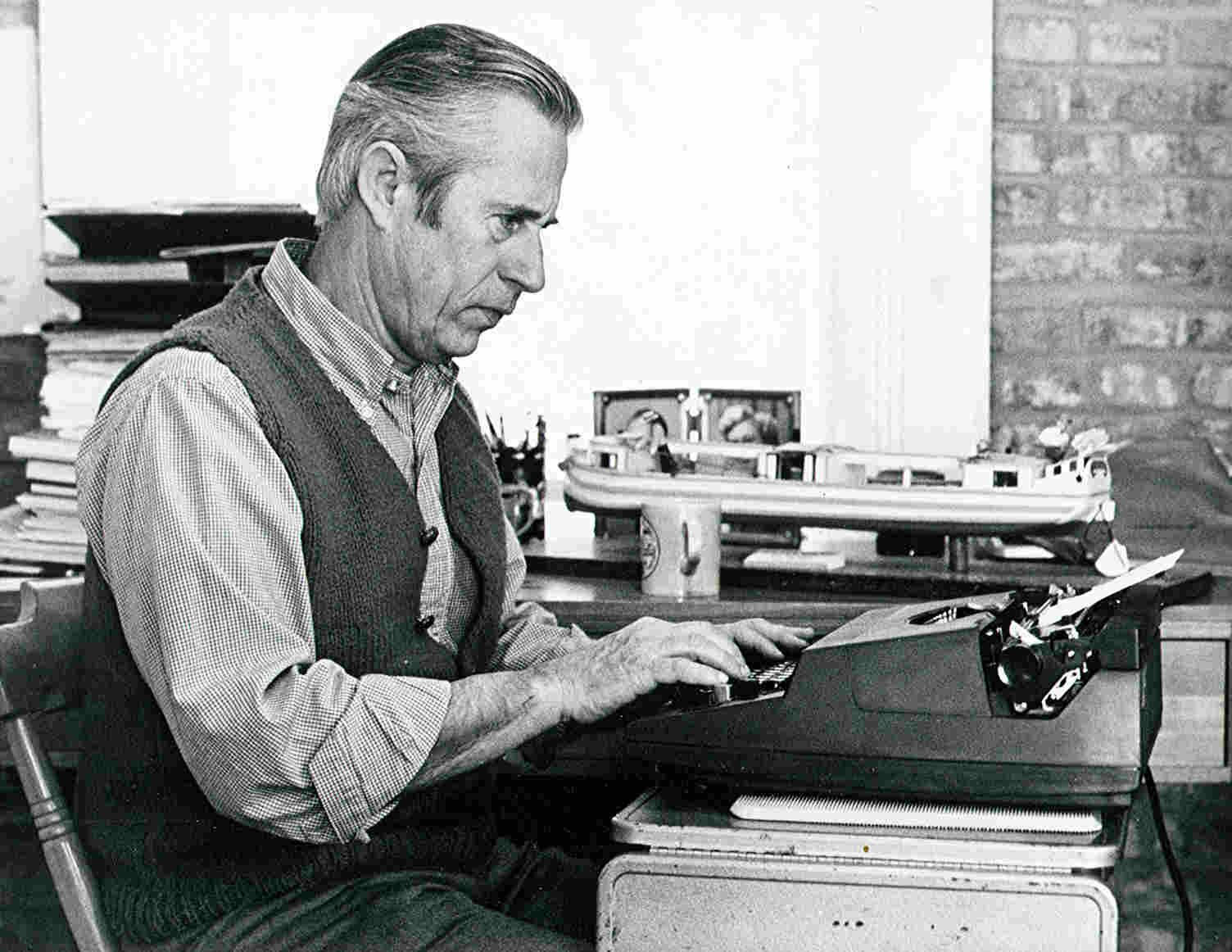
Tom at work on writing a book in his office at Shepherdstown,
West Virginia
1973--Supervisory Ranger, Restored Section, Chesapeake & Ohio Canal, Great
Falls, Maryland.
While I was still on active duty in the Navy, I was part of a group called The People's Plan for the Park. The purpose of that organization was to prevent the National Park Service (NPS) from overdeveloping the new Chesapeake & Ohio Canal National Park with paved towpaths, marinas, etc. In the debate at Washington by opponent was Dave Richie the Superintendent of the George Washington Parkway, who resp0ns8ibiity included the C&O Canal and the Potomac Canal. When I retired from the Navy and after the damage to the canal caused by Tropical Storm Agnes, Dave hired me to be his Assistant for Canals. [To be continued.]
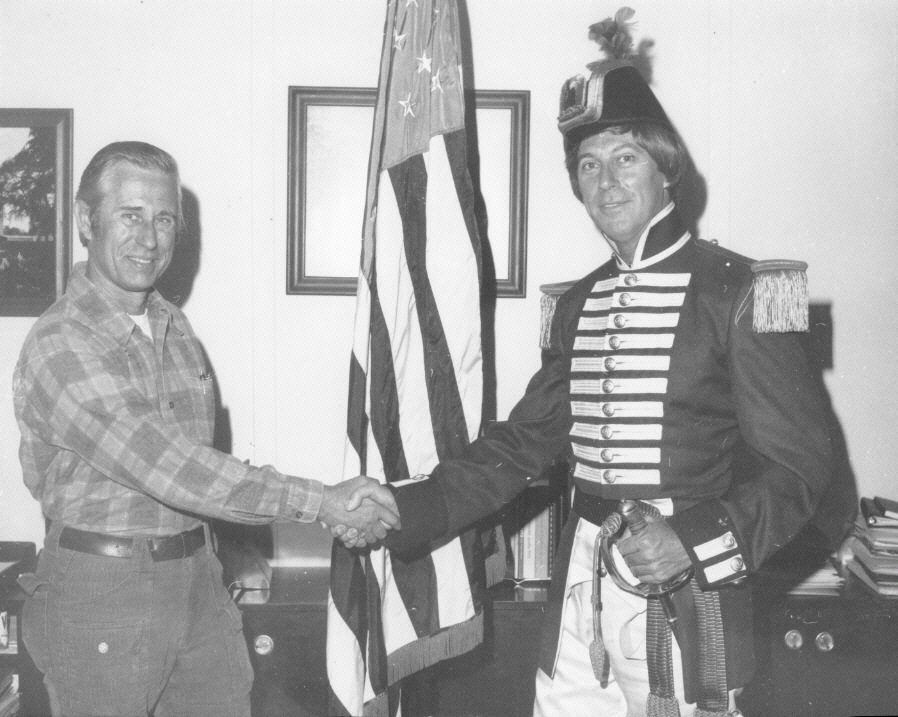
Tom Hahn Meets Representation of Historic Colonel Bye of Ottawa Canada in
Washington, District of Columbia, 23 October 1973 ( Hahn Collection)
1973-1975 -- Contract Industrial Archaeologist for the Denver Service Center, National Park Service, Denver, Colorado. Joseph "Joe" R. Prentice and I were the two field archaeologist for the five-member Research Team created to study the Chesapeake and Ohio Canal after the major damage done by Tropical Storm Agnes in 1972. During this period, Joe and I completed an industrial archaeological study -- consisting of of a physical inventory of several hundred canal structures -- as contract archaeologists for the National Park Service, Denver Service Center. We also did a two=week study of the Potomac Canal at Great Falls, Virginia, in preparation for the American Bicentennial.
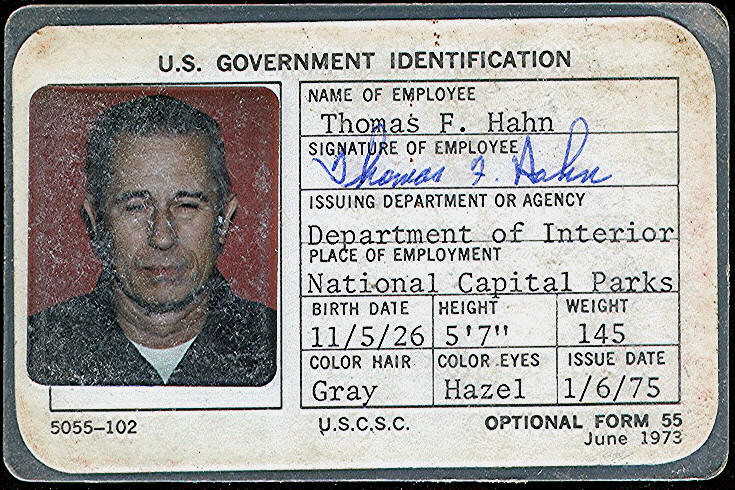
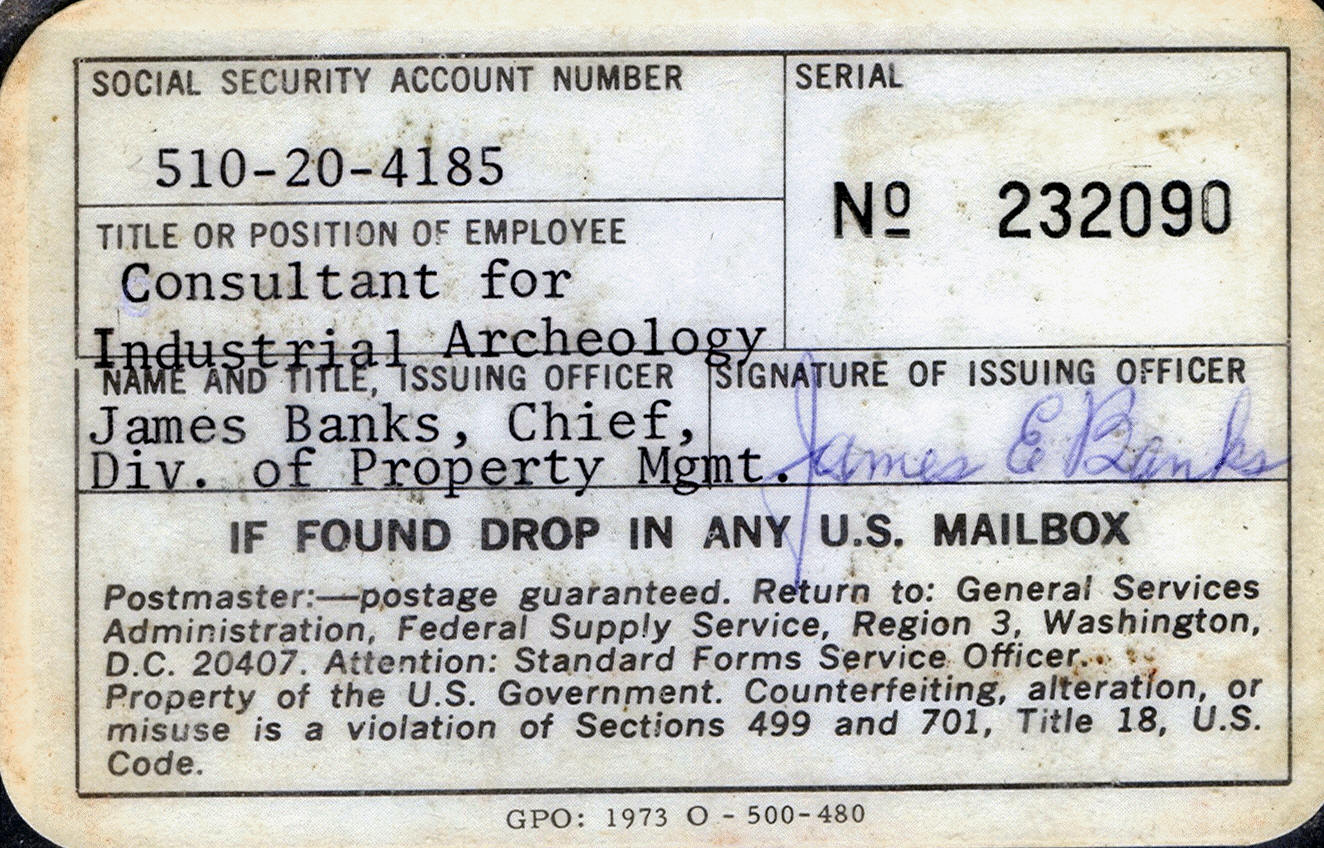
1976-1998 -- Owner, American Canal and Transportation Center, Historical
Publisher.
1982 -- Research Assistant, History of Science and Technology, College of
Arts and Sciences, West Virginia University, Morgantown, West Virginia.
1982-- Contractor for the Maritime History of Alexandria (Virginia), Industrial
Archaeologist, and Canal Engineer for the Alexandria Canal for Historic Alexandria,
Virginia.
1983 --1984--Assistant Professor, History of Science and Technology, College
of Arts and Sciences, West Virginia University, Morgantown, West Virginia.
1984 -- Director, "Working Places of the Past in The Eastern Panhandle," West
Virginia Humanities Council.
1985 -- Contract Industrial Archaeologist for Savage-Fogarty Companies,
Alexandria Canal, Virginia for the restoration of the Tide Lock of the
Alexandria Canal and the History of the Alexandria Canal.

Excavation and Restoration of the Tide Lock of the Alexandria Canal at Alexandria, Virginia. Dr. Tom Hahn, Project Archaeologist, Looking West, 1982. ( Hahn Collection)
This was the largest contract I undertook in my short career as a canal industrial archaeologist. The first stage in 1982 was an exploratory excavation undertaken for "Historic Alexandria" in an attempt to locate the Tide Lock and Basin. In addition, I had a small contract to write a preliminary "Maritime History of Alexandria, Virginia, and a canal engineering contract to recommend what needed to be done for its rebuilding/preservation. The second stage was in 1985 when we excavated the area and rebuilt the lock and basin. This was a part of the TransPotomac Canal Center Complex. The messy looking plastic was there to keep the wooden canal gates wet so as to help protect them until they could be reburied. I stayed at the Ramada Inn, shown in the background. I worked out of a trailer on the site. At one point, our work office/trailer the trailer was overturned and the contents vandalized, probably by union employees who resented the fact that we were not required to be union members because of our role in historic preservation. My field notes were taken or destroyed in that act of vandalism. The Potomac River at the beginning of the project was 180 feet to the east. At completion, the Tide Lock was at the river itself. The Institute for the History of Technology & Industrial Archaeology at West Virginia published the basic results of the project in the first of its Monograph Series: THE ALEXANDRIA CANAL: Its History & Preservation by Thomas Swiftwater Hahn & Emory L. Kemp, 1992. Dr. Kemp was my boss and the Director of the Institute. In addition to being an industrial archaeologist, Dr. Kemp had skills as a civil engineer that I lacked.
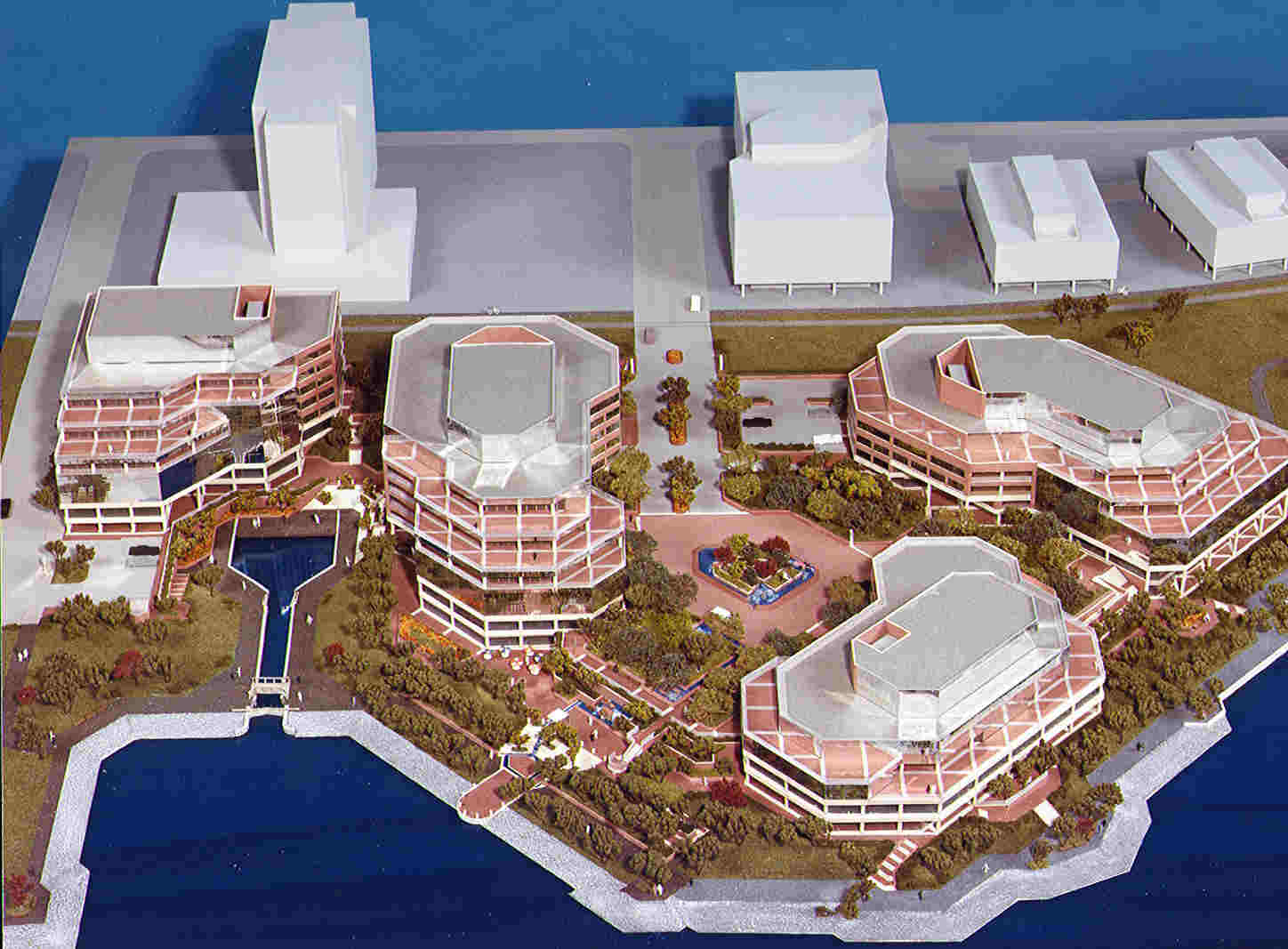
This is the Artist's Conception of the Completion of the
Alexandra Canal, Tide Lock and Basin at the TransPotomac Canal Center. The
Alexandria Maritime Museum (now defunct) was located on the ground floor of the
building to the right of the lock. The white building to the left background is
the Ramada Hotel where Emory Kemp and I stayed while working on the project.
1986-1991 -- Adjunct Assistant Professor, History of Science and Technology,
Arts & Sciences. West Virginia University.
1992-1993 -- Adjunct Member, Institute for the History of Technology and
Industrial Archaeology, West Virginia University.
1994-2004--Adjunct Professor, Institute for the History of Technology and
Industrial Archaeology, West Virginia University.
WRITER, EDITOR, PUBLISHER
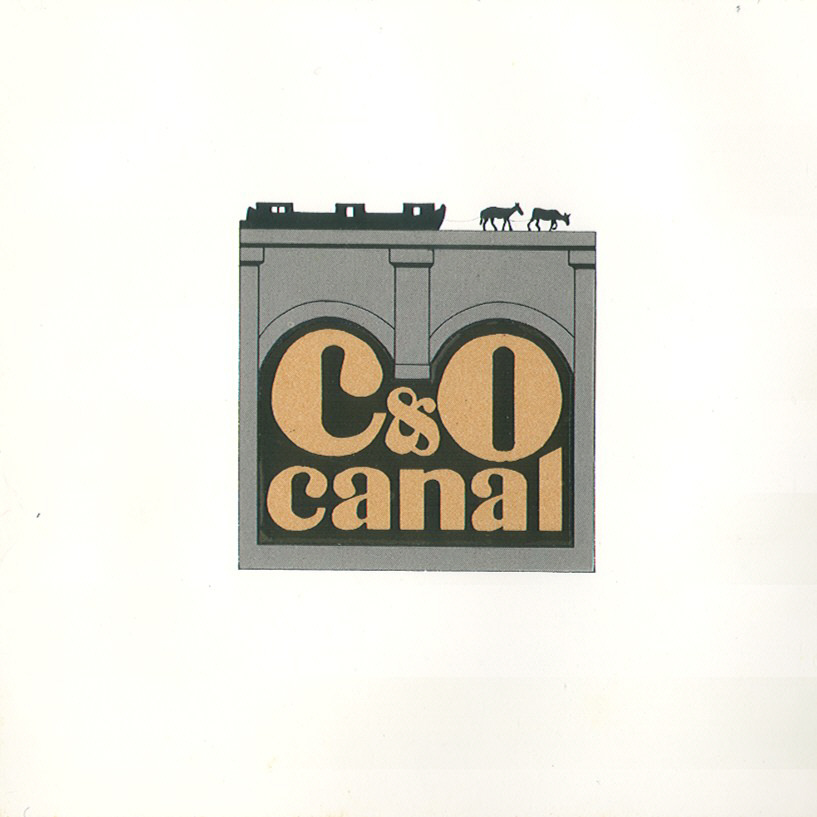
I was never a very skilled writer in school nor a particularly good writer of letters. Writing for a living came sort of accidentally with a job I took in 1954. When I resigned from the Navy in the Spring of that year, my intent was to get into the field of intelligence. To my surprise I landed a job as a writer with the Signal Corps Intelligence Agency (SCIA), a part of G-3, Army without any previous training or experience in writing. In the first place, the Department of Labor Office seemed an odd place to find a job in intelligence, but is had seemed an equally strange pace to find the job I had had previously as a pyro-metallurgist with Magnaslag, Incorporated. I was literally trained on the job by experts in both fields. At least I had some of the technical knowledge need for the latter job with SCIA. The job with this agency was in the Writing Branch as a technical writer turned out not to be a life-long career, but only for the years 1954-1956. The job consisted mainly of writing telecommunication studies for the National Intelligence Survey (Section 38 - Telecommunications) and for the Signal Technical Intelligence Studies for the Army, with an occasional brief to the Central Intelligence Agency or other branches of intelligence. I started as a GS-9 and was promoted in a year or so to a GS-11. I learned the physical and geographic details of several countries in this job. As I recall, we only had translators for French, German, and Spanish, so we were on own own to work with the documents that we were provided to us by the Collection Branch that weren't in English. That was a challenge that I enjoyed. I knew some languages and quickly picked up the basics others. I particularly working on two books, one a Russian to English Technical Dictionary and the other a book entitled "The Cables of the World." Another man, a naturalized Dutchman by the name of Jap Baay and I worked on the latter work as the branches' "wire men." In that capacity we also were involved with telephone and telegraph communications. Jap was a particularly nice man to work wit. I also became friends with a former Navy Officer [Gil _____], and Afro-American man, _____ [the names will come to me] and an Afro-American woman, Dolores Honey. They were my "buddies" there. When I was promoted to a GS-11. Dolores treated me and my wife and Chris who was about four years old to all all black bar and grill. Blonde-headed Chris was the centerpiece of the restaurant that evening and he loved it. Someplace along the line I began to get itchy feet. This was a small agency and chances of promotion were relatively limited. The average age was about 48 and her I was in my late 20s. Probably I still had a yearning for the Navy left there too. In any event, I began to quietly took around for other opportunities. One place was the National Chamber of Commerce in its Nuclear Energy Division. This was a difficult time to find employment and intelligence jobs were hard to come by. [To be continued.]

Chesapeake and Ohio Canal Scene by Nat Hahn
Translator for Transworld Language Service, Washington, District of Columbia in Bulgarian, German, and Russian.
1954-1956 -- Telecommunication Specialist, Signal Corps Intelligence Agency/G2 (Intelligence) United States Army. Technical Writer. Wrote Telecommunication Studies for the National Intelligence Survey and Signal Technical Intelligence Studies. GS-9 and GS-11. Translator for Transworld Language Service, Washington, District of Columbia in Bulgarian, German, and Russian.
Times New Roman 14 point. Laser copy 10 November 2004. Photo check A. TH